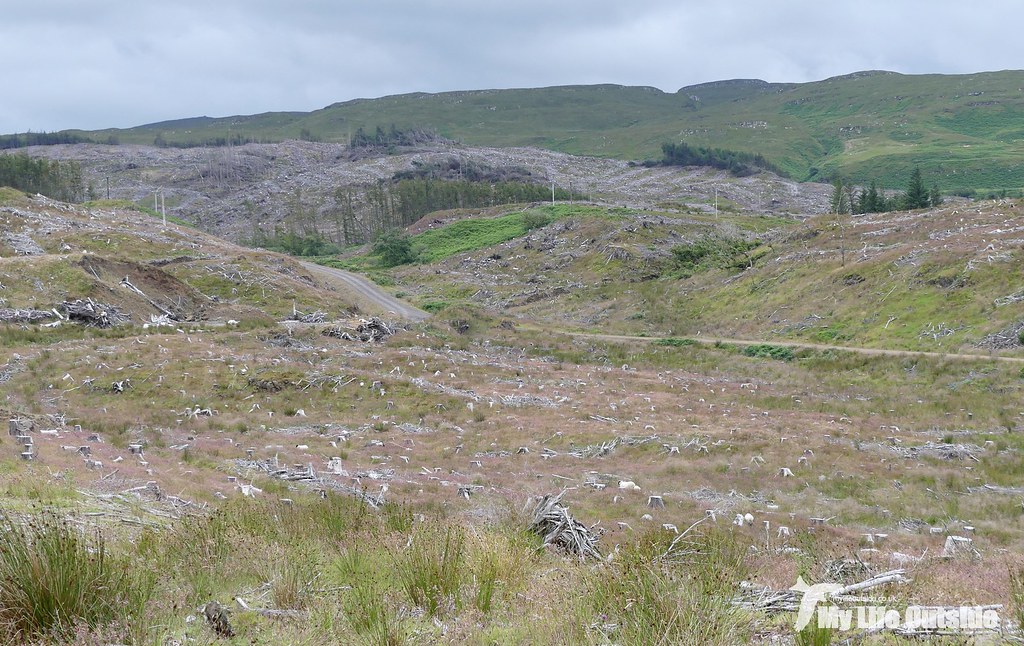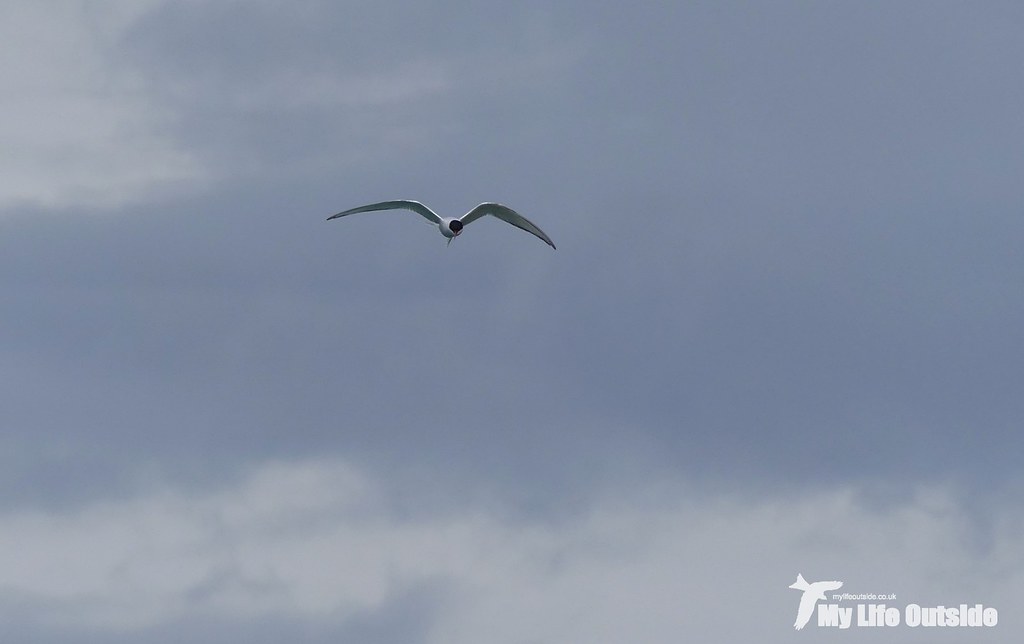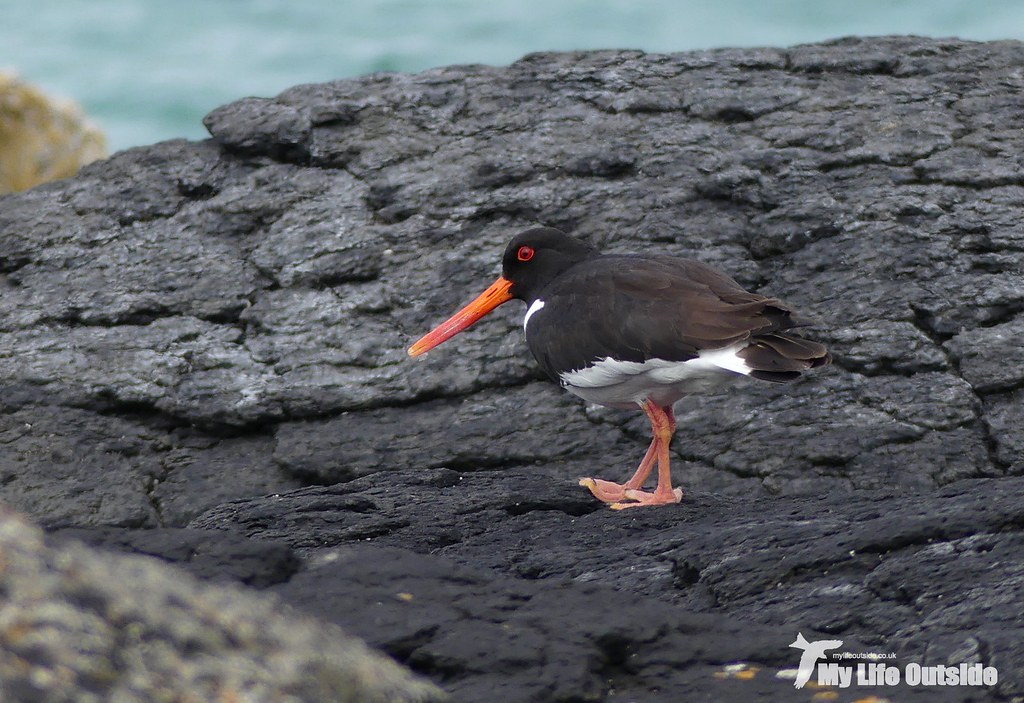
Originally written 13/07/2017
I notched up another year this morning and felt every one of them thanks to a chorus of aches and pains. Most of those I suspect were down to our adventures at Calgary the previous day where whole muscle groups which had lain dormant since last summer were suddenly called into action. It’s all worth it though and there’s nothing better at loosening up a hurting body than going for a good long walk. Our destination of choice this time was Langamull, tackled either via a simple out and back route or as part of a longer circuit depending on the weather. I’d already seen the forecast and was suspecting the former but nevertheless we set off with high hopes.

And initially things were looking good. Cloudy but bright conditions meant a warm saunter through the previously dense pine plantations, now felled opening up the views considerably. This new landscape also seems to have benefited the birds in that although we appear to have lost the Crossbills we’ve gained an abundance of other species in their place. Today these included a lovely pair of Whinchats whose call initially had us flummoxed as well as a fine male Bullfinch, hoards of Meadow Pipits and a pair of fly over Mistle Thrushes. We also had decent views of an adult White-tailed Sea Eagle heading inland though sadly too far away for any photos.
It was good to see a couple more Grayling on the wing here as well but with the exception of a Common Blue butterflies were being kept at bay by an increasingly brisk wind. This proved moderately frustrating when what I think might have been a Scotch Argus was sent merrily on its way. Curses.

Down at Langamull itself two friendly Goats welcomed our arrival and attempted to curry favour by nuzzling Emma’s bag. I suspect that it was actually our packed lunch within which held more of an interest than ourselves. Fortunately they weren’t too persistent and we soon had the tropical white sands to ourselves, unless of course you want to count a Bull and his herd of heifers. Needless to say we gave them a wide berth only to come under attack from an unexpected angle. Hurtling in on a direct intercept course came none other than an enraged pair of Arctic Terns hurling insults which I believe roughly translated as “keep your distance”. Having been on the receiving end of those sharp beaks in the Farne Islands I was keen to heed their advice but why the aggression? We soon found out. Further along the beach sat a juvenile Tern, fully fledged but still being fed by its parents at regular intervals. This was fantastic news as it marks at least the second time in recent years that these birds have bred here, though quite how they manage it in a place frequented by numerous visitors and dogs is anyone’s guess.

Also out on the rocks were a pair of Ringed Plovers and a Common Sandpiper, not to mention the almost ubiquitous Oystercatcher. They were as boisterous as ever though one individual surprisingly landed quite close and seemed happy to pose for the camera.

It was about this time when everything went south. Looking out across the sea Coll, Canna and then Rum disappeared from view, followed shortly after by the first heavy drops of rain. There was just chance to don full waterproofs before the heavens opened rendering my momentary worry that over trousers might be overkill mute. At least the shower was short lived, if only it hadn’t been followed almost immediately after by one of even greater intensity.
We clearly had a choice to make. Slink back to the car defeated or continue on our planned route. With nothing but bravado to go on we decided to push onwards, hopeful that the showers would pass. They didn’t but we still enjoyed a great walk and even managed to explore a sliver of the island hitherto unvisited. And even though my camera was now packed away that didn’t mean an end to our sightings which included a couple of resilient Skylarks still singing and around at Croig four Redshank, three Curlew and no less than eight Common Sandpipers. That last is a personal record in terms of quantity and I can only presume that there must be something particularly enticing in the mud there. If, no, when the sun returns we shall have to pop back for a more thorough explore.



0 Comments